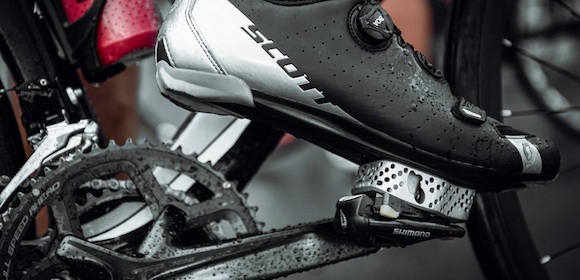Metal Additive Manufacturing enables NZ Defence Force veteran to compete in Invictus Games
June 30, 2020

Zenith Tecnica, Auckland, New Zealand, recently used GE Additive Arcam EBM technology to produce a titanium part enabling New Zealand Defence Force (NZDF) veteran, Stevin Creeggan, to compete in the cycling events at the 2021 Invictus Games. The part, a titanium spacer, compensates for a difference in the length of Creeggan’s legs by raising the surface height of one bicycle pedal.
Creeggan was sole survivor of a helicopter crash in 2010 which left him with multiple injuries, including self-fused vertebrae in his neck and lower back, and severe damage to his right leg, which was reconstructed with plates, screws and rods to hold his femur and lower femur together – leaving it shorter than his left leg by 2.5 cm.
According to Creeggan, maintaining his fitness became a challenge after his accident, leading him to take up cycling and later put his name forward to complete in The Invictus Games. The games were founded in 2014 by Prince Harry for current and former armed service personnel who have been wounded or injured. Next year, Creeggan will compete in the archery, wheelchair basketball and cycling events.
Having one leg shorter than the other could make cycling a challenge, as the pedals on bikes sit at the same height. To make cycling easier, Creeggan initially made himself a spacer and cleat to fill the gap between his right foot and his bike pedal using bog, the material used by panel beaters to fill dents in cars. “It’s strong but very heavy,” he explained. The addition of heavy materials to a bicycle frame is a significant concern in competitive cycling.
“I spoke to my Invictus sports team manager, David Pilgrim, who took it to the NZDF engineering design team without me knowing,” Creeggan continued. “When I found that out you could have knocked me over with a feather, I was so surprised!”
Ewan Conaghan and Martin Campbell, New Zealand Defence Force mechanical engineers, took on the project. While Campbell stated that he has a long history with bicycles and “jumped at the chance” to produce the spacer, Conaghan noted that the design brief was out of the ordinary for a design engineering team more accustomed to designing parts for military vehicles.
“We are mechanical engineers, but people will knock on our door with all sorts of ideas,” he stated. “As soon as we saw David’s request, we knew immediately that 3D printing was the way to go.”
The spacer and shoe cleat produced by Creeggan from bog weighed 250 g. “That is ridiculously heavy, and so one of our primary tasks was to work out how to significantly reduce its weight, whilst maintaining its strength and resilience to the outdoors,” stated Campbell.
The team initially designed and additively manufactured a test run of carbon fibre prototypes, working with Creeggan to perfect the design. “With GE’s additive technology, using titanium we were able to reduce the weight to 50 g which was just great for Stev and the design is specific to his shoe,” Campbell continued.
Zenith Tecnica was contracted to additively manufacture the final piece in titanium using GE Additive Arcam EBM Q10plus machine, which uses Electron Beam Powder Bed Fusion (PBF-EB) technology. The company’s technical manager, Peter Sefont, stated that the design was highly effective, noting, “we only had to suggest a few small tweaks to get to the final design and it allowed us to get the most out of the additive technology.”
Zenith Tecnica primarily delivers parts for the aerospace, motorsports, marine and medical sectors, and so the production of the bicycle spacer and cleat was a new challenge. “Our GE Additive EBM machines are certified to 3D print titanium aerospace and medical parts,” explained Sefont.
“We make quite a few customised patient-specific implants and prosthetics, as mass customisation is one of the key benefits to 3D printing, but the pedal spacer and cleat is not something we have manufactured before so it was great to be a part of it,” he stated.
Creeggan commented, “I have had quite a few comments on how beautiful the design is and questions as to how it keeps its strength. A lot of people don’t realise there is a spacer there at first, and that’s a testament to 3D printing technology and titanium.”
“The design team found that sweet spot in the middle of being light, functional and strong,” he continued. “My right leg is now ergonomically correct so it is now at the point where I can stand up to pedal and I have trust in my leg and my bike to push harder than I have been able to before. I am now doing 23 km in thirty minutes in the track criterium, up from 18 km.”
















